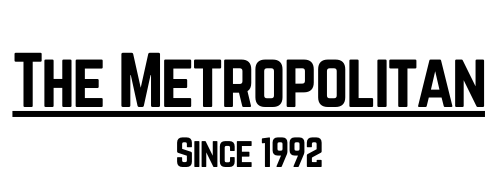By Eduardo Morales
When people go to prison, one of the first things we learn is to “do your time.” When you are sentenced, your time alive as a human being is chained up, packaged, and thrown in a cell. Art as an outlet, as a therapy can transport us, and shows us how to strive for freedom.
Art allows us to be the best that we can be, to graft our talents, and deal with anger and violence in healthy manners. L.B., an inmate in county jail, said to me the day before I was transported to prison, “They can chain and imprison my body, but they will never be able to imprison my mind. In here,” he said, as he pointed at his head, “I will always be free. Never letthem break you, stay strong, and always strive to be the best you can be.”Incarcerated artists find ways to channel and show their pain, suffering, and sacrifice into their art. Society does not contemplate how much pain, suffering, and sacrifice incarcerated people experience. This is channeled directly through art forms on the inside, and that is why there is an immense pure source of amazing artists in prison.
In county jail, it is very common to see inmates selling envelopes with drawings, cards for loved ones or even portraits. During my first two months in Hennepin County, I would sell 30 minute portraits that I would draw using seg pens, flexible small pens, and printer paper. For color, I would use the jail kool aid packs, the outer coating of M&M’s that I would water down, and even blue pens with shampoo. In prison, incarcerated people use all kinds of media and techniques. From coffee, soap, toiletpaper, beadwork, and crochet. It is not uncommon for people in the hole to make brushes out of their beards or hair from their head. A very common material is pen, which is used in order to create “Viajes.” These are explained as “trips or journeys,” and express different stories of individuals’ life experiences, such as their love lives, family, heartbreaks, criminal experiences, internal demons and conflicts, and how they came to prison. The themes of prison art are extensive: some depict their pain, while others are so tired of it that all they can express is nature and beauty.
Amaru is a Stillwater artist who has done beautiful portraits of his children and country, Puerto Rico, in graphite. He stated, “People might be upset because they can’t see their kids. Some guys only get a baby picture, and that’s all they get. Some of us come to prison and don’t get even the pleasure to see our kids. Art matters in prison. Prison is designed to be cold and cruel. Art brings life to you, and makes you feel that you’re still a part of this world.”
When an incarcerated person is taken to segregation, he becomes even more confined than being in a regular prison cell. There is literally nothing to do, and getting your property, such as your tv, tablet, or even clothes becomes a stressful process. “When you go to the hole, you get nothing. A lot of guys get creative. Some don’t even know how to draw, but they start.”Art can help people on the outside see incarcerated individuals as more than a prisoner, Amaru said, “People can actually see what type of talents an individual can develop. Just because they are incarcerated doesn’t mean they don’t have the ability to create. It’s all supposed to be bad in here, but it’s important to know I created beauty out of something that’s ugly.”
“Idle hands are the devil’s playground,” states Bones, an artist and prisoner who has been creating for the last five years. “All my family are crafty, people fix things and work with their hands. I do art for two things. One, art to bring joy to other people, and two, I do it because it interests me. Because of art, I have been meeting people that I normally wouldn’t. I like that I am able to give something I created to others. It’s a good way to kill time.”
MacKADollar is an up and coming artist at Stillwater, who started developing his visual art skills more recently. I asked him what made him start doing art after so many years. He stated, “I have a gate three ban due to a weapons charge and bodily harm for an assault.” A gate three ban means that he is not able to get a job in the industry department. (In order to get to work every morning, inmates need to go through gate three into another part of the prison.) He started doing art after being in segregation. He says that doing art helps him connect with his kids. “It shows me how much I miss my kids. I notice things about them that I haven’t before. They become familiarized in photos, but when I draw them or paint them, it’s more personal.” Since he started doing art, he hasn’t been sent to solitary confinement. “Because of art, I have been seg free.”
Violence is prominent when there is nothing else to do in a closed environment. When asked about art on the inside, inmate ETONE wanted to relay to anyone that is reading that, “with art,you can always learn from your mistakes. Every time you try it, there is a new mistake.” The process of buying art supplies such as paint or canvases takes a minimum of three weeks after filling out your order. There are many items that are not allowed or, even if allowed, will not be given to the inmate for whatever reason the correctional officer gives you that day. This means that regardless of how expensive supplies are, you might not even get what you ordered. “It is unnecessarily limited. They take away stuff that are not a security risk and they use prejudice as a punishment.”
“I like how relaxed you are when you paint, bead, or draw. It’s a type of therapy. Art is a part of me, a part of life. Why is art and self improvement not recognized as programming within the DOC? All art forms are a positive outlet. Why not see every one of those as self improvement because it’s one of the only out sources we have.” stated ETONE. We know that visual art allows prisoners exposure to different pillars of the outside community. To some of us, it helps with mental illness and stress, to other inmates it allows society a chance to see that there is a lot of talent in prison. We need art in order to cope and reflect. Inmate Micheele wants readers to know that art, “keeps me out of trouble, keeps my anger and anxiety under control. It takes me out of this place. Art is important. Keep doing art.”

